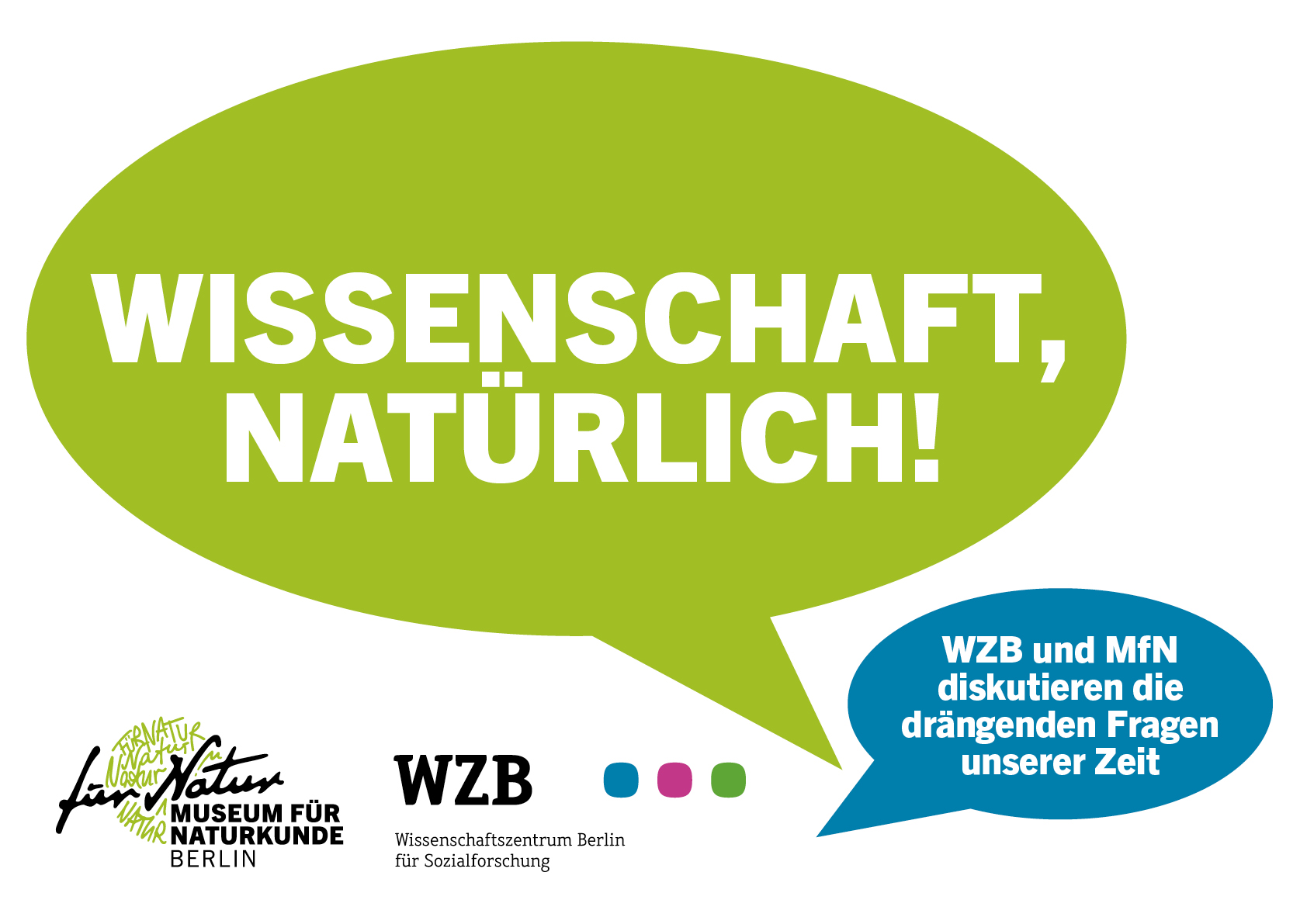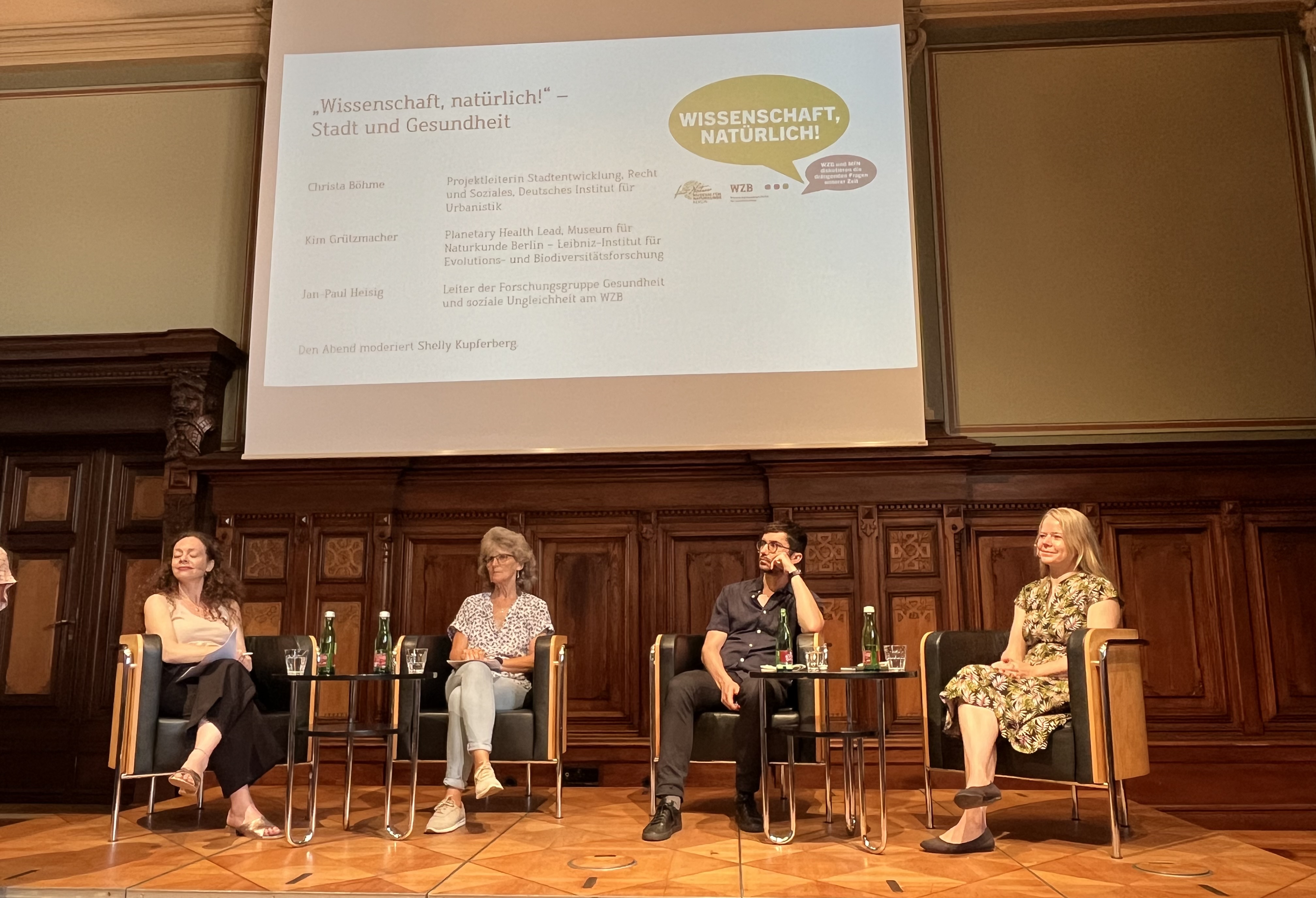
Life in our cities is changing. Climate change, the influx of large numbers of people and the densification of urban districts are playing a major role. It is currently estimated that 2.5 billion people will be living in cities by the middle of this century. The topic of “cities and health” will therefore become increasingly important in the coming decades - in the world, in Germany and in Berlin. Heat waves and air pollution already indicate this today.
It is therefore important to ask: How do we bring both - city and health - together in a meaningful way so that people can live well in the city under the changed climate conditions? How do social structures, lifestyles, energy, water and mobility systems shape our lives in cities? Who manages to live healthily and who does not? What distribution conflicts are there? How can the multiple burdens in certain neighborhoods be reduced?

These questions were addressed at the event in the “Wissenschaft, natürlich!” series on July 10, 2023 at the Social Science Research Center Berlin (WZB). On this evening, the transformation of urban living conditions was linked to the climate crisis. Because planetary health, the state of the earth and the well-being of people, must be considered together. Urban planning aspects will also play a major role in our discussion. What can health-promoting and integrated urban development look like? And finally, we want to look to the future. The city of tomorrow: what will it look like, how will we live, how will we get around? How can nature and the city be brought together? And most importantly: how can we create space for our children?
On the podium
- Jan Paul Heisig, Head of the WZB Research Group Health and Social Inequality
- Kim Grützmacher, Head of One Health/Planetare Gesundheit, Museum für Naturkunde Berlin (MfN)
- Christa Böhme, German Institute of Urban Affairs, Project Manager Urban Development, Law and Social Affairs
- Moderator: Shelly Kupferberg, journalist and author
The event is part of the joint series “Wissenschaft, natürlich!” by the Social Science Research Center Berlin (WZB) and the Museum für Naturkunde Berlin (MfN).